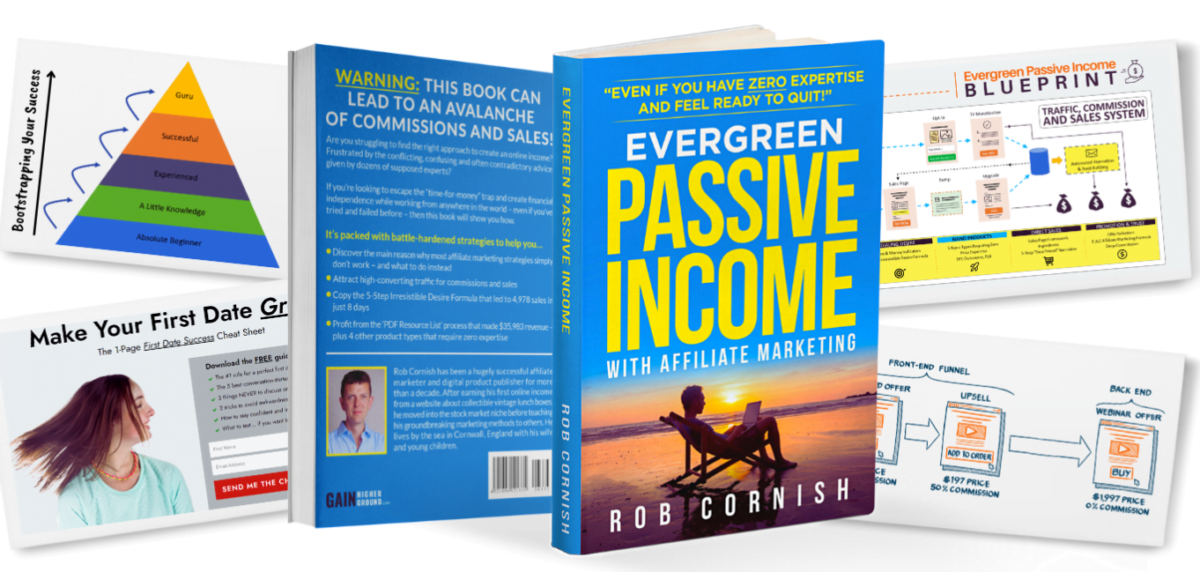The Best High-Paying Affiliate Programs for Bloggers You Can Join Right Now!
Have you ever wondered how some bloggers generate over $50,000 a month while sharing their passions online? The secret lies in exploring high-paying affiliate programs for bloggers that offer lucrative affiliate marketing opportunities. With the affiliate marketing industry booming, reaching a staggering $6.8 billion in recent years, there’s never been a better time for bloggers to start monetizing blogs through affiliates. This article will help you uncover various high-paying affiliate programs and the strategies to maximize your income while enhancing your blogging experience.
Key Takeaways
- Understand the basics of affiliate marketing to maximize earnings.
- Engage with high-paying affiliate programs to boost your blog income.
- Explore diverse earnings from commissions, free products, and more.
- Utilize key metrics to track your affiliate performance effectively.
- Learn from successful bloggers who have mastered affiliate promotions.
Introduction to Affiliate Marketing
Affiliate marketing represents a powerful, performance-based approach where individuals earn commissions by promoting products or services offered by other businesses. This method of earning revenue aligns seamlessly with blogging, providing financial rewards while enriching the reader’s experience. As bloggers navigate various monetization strategies, an understanding of affiliate marketing’s foundational principles becomes crucial.
Through an introduction to affiliate programs, bloggers can engage in partnerships that resonate with their content and audience interests. For example, many bloggers in the golf industry collaborate with over 30 companies, reaping commissions that typically range from 5% to 20%. This strategic alignment fosters a mutually beneficial relationship, enabling affiliates and businesses alike to flourish.
Numerous successful bloggers report impressive results; one author even earned $500 in just five minutes through effective affiliate marketing. The variety of affiliate programs available offers great flexibility, as platforms like Amazon provide commissions between 1% and 4.5%, depending on the category. Initiating an affiliate relationship can result in substantial yearly revenue increases, showcasing the enormous potential of these programs for bloggers looking to monetize their platforms.
What is Affiliate Marketing?
Affiliate marketing represents a lucrative opportunity for bloggers to earn revenue by promoting products or services for third-party brands. This process involves forming partnerships with companies, allowing bloggers to share unique affiliate links on their platforms. Understanding affiliate marketing involves knowing how these links function and how the earned commissions accumulate when users click through them and make purchases.
Understanding the Basics of Affiliate Marketing
At its core, affiliate marketing is about *earning commissions based on sales generated through referrals*. When a reader clicks an affiliate link, the referring blogger earns a percentage of the sale, creating a win-win scenario for both the affiliate and the merchant. For instance, LiveChat’s top affiliate marketer has recorded earnings exceeding $4,100,000, illustrating the financial potential within this industry.
How Affiliate Programs Work
Many brands offer various affiliate programs, each with unique commission structures. For example, the Fiverr Affiliate Program grants affiliates between 25% to 100% commission on the first order, along with a 10% revenue share on subsequent orders for a year. This variety empowers bloggers to choose partnerships that best fit their audiences and maximize their revenue potential. Other examples include:
- The Tripadvisor Affiliate Program, which offers a minimum of 50% commission from hotel booking referrals.
- FreshBooks, where affiliates can earn up to $10 per initiated free trial and up to $200 for each paid subscription.
- OptimizePress, offering 30% per sale and 20% in recurring commissions on account renewals.
By comprehending how affiliate programs operate, bloggers can align themselves with brands that resonate with their audience. This insight enables bloggers to create targeted content that earns commissions while promoting products they believe in, ultimately enhancing their earning potential in the affiliate marketing landscape.
Benefits of Joining High-Paying Affiliate Programs
The landscape of affiliate marketing presents vast opportunities for bloggers seeking to optimize their income. Joining high-paying affiliate programs can yield significant financial benefits, making it a lucrative avenue for passionate content creators. Bloggers can explore various programs that align with their niche, ensuring that their promotional efforts resonate with their audience.
Financial Gains from Affiliate Marketing
Many of these programs provide impressive commission structures. For instance, Semrush offers a commission rate of $200 for each sale and an additional $10 for every free trial referral. Similarly, ActiveCampaign provides up to 30% in recurring commissions, while HubSpot allows affiliates to earn 30% recurring commissions for a full year. These financial benefits of affiliate marketing can lead to substantial earnings, particularly when promoting services and products priced at higher points.
Building Relationships with Brands
Establishing partnerships with brands enables bloggers to engage in more than just financial transactions. Building brand relationships through partnerships often results in collaborative opportunities, sponsorships, and enhanced visibility. This commitment to mutual growth strengthens the bond between bloggers and brands, leading to a rewarding partnership that extends beyond immediate affiliate earnings. Furthermore, popular affiliate networks like impact.com and CJ Affiliate facilitate these relationships, allowing bloggers to align their values with trusted brands.
High-paying affiliate programs for bloggers
In 2024, bloggers have an array of options when it comes to high-paying affiliate programs. These programs not only offer promising commissions but also cater to various niches, ensuring a good fit for your audience. Understanding the different commission structures for bloggers plays a vital role in maximizing your potential earnings through affiliate marketing.
Top Choices for 2024
Among the top-paying affiliate programs, platforms such as Amazon Associates, Bluehost, Shopify, and ConvertKit stand out. Each of these programs has unique offerings for bloggers. For instance, Freshbooks offers a remarkable payout of up to $200 per sale, while WP Engine rewards affiliates with $200 per referral. Smaller yet lucrative options include Healthy Wage, which provides a $50 commission per sale, and Grammarly, which pays $20 for each upgraded account. For bloggers in the beauty niche, brands like Sephora and Birchbox are excellent choices due to their extensive product lines and attractive commission rates.
Understanding Commission Structures
Evaluating commission structures is essential for making informed decisions about affiliate partnerships. Programs may offer percentage-based commissions or flat-rate payouts. For physical products, commissions typically range from 3% to 12%, while digital products can offer between 20% to 60% in commissions. Awin, for instance, has a modest admission fee of $5 and provides access to numerous affiliate opportunities. ShareASale affiliates can expect yearly earnings between $1,300 to $2,000. By aligning your selections with your audience’s interests, you can enhance click-through rates and conversions.

Top-Tier Affiliate Networks You Should Consider
Finding the right affiliate network can significantly enhance a blogger’s success in affiliate marketing. The best affiliate networks provide access to a diverse array of programs, making it easier for bloggers to align with brands that resonate with their audience. By utilizing these networks, bloggers can focus more on content creation while enjoying the numerous benefits these networks offer.
Popular Affiliate Networks
Several renowned affiliate networks stand out in 2024, offering promising opportunities for bloggers:
- ShareASale: Known for its wide variety of programs, it’s a favorite among niche bloggers.
- CJ Affiliate: This network features large brands and provides excellent tracking tools.
- Rakuten Marketing: Holding a significant market share, this network is ideal for partnering with renowned brands.
- Amazon Associates: One of the most popular programs, offering a commission range of 1% to 10% depending on the product.
- eBay Partner Network: Offers commissions between $1 and 4% on each sale.
- ConvertKit: Provides a generous 30% monthly recurring commission for up to 24 months.
- Leadpages: Up to 50% in recurring commissions for every sale, including renewals.
Advantages of Working with Affiliate Networks
The benefits of affiliate networks for bloggers are numerous and impactful:
- Diverse Choices: Access to many different programs, making it easier to find fits for various niches.
- Improved Tracking: Enhanced reporting tools simplify the management of affiliate links and campaigns.
- Better Commission Structures: Many networks offer competitive commission rates, ensuring higher earnings.
- Streamlined Payments: These networks often provide reliable payment processes, reducing the hassle for bloggers.
By leveraging these top-tier networks, bloggers can optimize their affiliate marketing strategies, ultimately driving more revenue through their platforms.
Lucrative Affiliate Marketing Opportunities
Finding the right niche is crucial for optimizing your earnings in affiliate marketing. By focusing on niche selection strategies, bloggers can discover profitable avenues that not only engage their audiences but also lead to significant commissions. A well-chosen niche aligns with personal interests and market demand, enhancing the authenticity of your content.
The Role of Niche Selection
Niche selection dictates the success of a blogger’s affiliate marketing efforts. A niche that resonates with both the creator and the audience leads to stronger connections and improved content quality. Popular niches include:
- Website builders
- eCommerce platforms
- Web hosting services
- Travel and lifestyle
- Health and fitness
- Digital products
By assessing trends and audience preferences, bloggers can uncover lucrative affiliate opportunities that fit their chosen niches. Programs like BigCommerce offer affiliates 200% of the customer’s first monthly payment, illustrating the potential rewards of selecting the right niche.
How to Identify Lucrative Opportunities
Identifying lucrative opportunities involves research and market analysis. Consider these strategies:
- Join online forums, such as Reddit’s r/Affiliatemarketing, to learn from the experiences of others.
- Explore directories like AffiliatePrograms.com and OfferVault to discover countless programs.
- Evaluate programs with sizable commissions, such as Freshbooks, which offers up to $200 per sale.
- Look for programs with long cookie durations, like Capitalist Exploits, ensuring more chances for commissions.
By employing these niche selection strategies, bloggers can match their interests with profitable offerings. Platforms like ShareASale and ClickBank provide a wealth of options tailored to various niches, enabling effective monetization of blog content.
Steps to Join Affiliate Programs
Joining affiliate programs can significantly enhance a blogger’s revenue potential. Understanding the right approach can make the process seamless. Start by identifying programs that align with your blog’s niche and audience. This section covers essential steps for finding and applying to affiliate programs, along with tips on effective content creation for affiliate marketing.
Finding and Applying to Programs
Begin your journey by researching affiliate programs relevant to your niche. Many brands offer affiliate opportunities, although not all industries are equally represented. Here are some useful steps to consider:
- Search for brand-specific programs related to your content.
- Utilize affiliate networks like ShareASale and Skimlinks to access multiple programs.
- Review the requirements and approval processes of each program to ensure eligibility.
Once you have identified potential programs, apply with a well-crafted application that showcases your blog’s reach and audience engagement. Don’t forget to include an affiliate disclosure in your content to maintain transparency with your audience.
Creating High-Quality Content for Promotion
Successful content creation for affiliate marketing involves strategically placing affiliate links to maximize visibility and click-through rates. Consider these strategies:
- Integrate affiliate links naturally into your blog posts, focusing on relevant products.
- Add compelling calls-to-action to encourage readers to click on the links.
- Use link cloaking tools to improve user experience and protect affiliate links from bots.
- Organize your affiliate links by categories or campaigns for easy management and access.
Leveraging analytics tools like Google Analytics can provide insights into how visitors find your site, helping you refine your content strategy. By applying these techniques, you’ll create value for both your readers and your affiliate partners.
Tracking Performance and Earnings
Ensuring success in affiliate marketing requires a keen focus on tracking affiliate income and analyzing vital affiliate marketing metrics. By monitoring performance, bloggers can refine their strategies and maximize profitability. Effective tracking allows for informed decisions, enabling marketers to understand which efforts yield the highest returns.
Understanding Affiliate Metrics
Successful affiliates often rely on specific metrics to gauge performance. Key metrics include:
- Click-through rates (CTR): Measures the effectiveness of promotional efforts.
- Conversion rates: Indicates the percentage of visitors who complete a desired action.
- Average earnings per click (AEPC): Evaluates how much revenue is generated per click.
Understanding these critical metrics enhances the ability to track affiliate income accurately, leading to better decision-making and optimized campaigns.
Tools for Tracking Affiliate Sales
Several tools can assist in monitoring affiliate performance and sales effectively:
- Google Analytics: Offers comprehensive data on traffic and conversions.
- Affiliate network dashboards: Provide specific insights about sales, clicks, and commissions.
- Refersion: This platform allows tracking revenue and managing referrals easily.
By leveraging these tools, bloggers can gain valuable insights into their affiliate marketing metrics, helping them to refine their strategies and increase their earnings.
![]()
Recurring Affiliate Revenue Streams
Generating recurring affiliate income offers a strategic way for bloggers to establish a steady revenue stream. By aligning with affiliate programs with recurring commissions, bloggers can create a more predictable income model. This approach allows content creators to build long-term relationships with their audiences while enjoying the stability of ongoing commissions.
Benefits of Recurring Commissions
Recurring commissions deliver significant advantages compared to one-time payments. Key benefits include:
- Predictable income: With recurring commissions, affiliates can estimate their income more accurately over time.
- Reduced pressure: There’s less urgency to continually acquire new customers, allowing affiliates to focus on nurturing relationships with existing ones.
- Increased loyalty: Building strong bonds with customers creates opportunities for upselling and cross-selling.
Best Programs Offering Recurring Income
Many reputable affiliate programs offer recurring commissions to support bloggers in building sustained revenue. Notable options include:
- ConvertKit: Provides a 30% lifetime recurring commission with a 90-day cookie duration.
- AWeber: Offers a 30% lifetime recurring commission on the initial sale, plus ongoing commissions for future payments.
- Teachable: Features a 30% recurring lifetime commission, with potential increases to 50% based on monthly sales.
- ClickFunnels: Starts at a 20% lifetime commission, which can grow to 30% or 40% as sales volume increases.
- Elegant Themes: Pays a 50% commission on yearly renewals with a 180-day cookie duration.
- ActiveCampaign: Offers up to 30% lifetime recurring commissions alongside a 90-day cookie duration.
Influential Blogger Affiliate Promotions
Successful blogger promotions can greatly enhance affiliate marketing efforts. Experienced bloggers have shared their strategies and insights, offering a roadmap for newcomers to follow. By understanding their success stories, you can identify effective approaches and adapt them to your own blogging journey.
Success Stories from Experienced Bloggers
Many bloggers have thrived by skillfully implementing influencer marketing strategies. For instance, they often choose affiliate programs that resonate with their blog’s niche and target audience. This relevance cultivates trust and reliability. Programs like ShareASale connect bloggers with a variety of brands, enabling tailored promotions.
- Blogs featuring high-quality content are more likely to attract readers and convert traffic to sales.
- Leveraging partnerships, such as those with Amazon Associates, allows bloggers to promote millions of products, ensuring there’s something for everyone.
- High commissions can also enhance motivation, with affiliates earning upwards of $200 per sale from partnerships like WpEngine.
How to Base Your Strategy on Influencer Practices
Observe how successful bloggers engage with their audience and present products they genuinely believe in. Authenticity plays a significant role in building credibility and encouraging conversions. Focusing on influencer marketing strategies allows new bloggers to:
- Analyze competition for insights into effective product promotion.
- Seek affiliate programs with competitive commission rates and favorable terms.
- Engage with their followers through transparency and expert insights.
Understanding the dynamics of successful blogger promotions and influencer marketing can elevate your affiliate marketing game. The shared experiences and techniques of established bloggers serve as valuable lessons in navigating this competitive landscape.
Tips for Effective Affiliate Marketing
To navigate the world of affiliate marketing successfully, bloggers must adopt effective practices. Authentic promotion, quality content, and audience engagement are essential components. This section outlines effective affiliate marketing tips, discussing both best practices and common pitfalls to avoid.
Best Practices
Implementing sound strategies is key to thriving in affiliate marketing. Consider the following:
- Provide genuine recommendations: Select products that align with your values and audience needs. Authentic product selection builds trust.
- Disclose affiliate relationships: Transparency is vital for maintaining credibility. The Federal Trade Commission mandates clear communication regarding affiliate links.
- Utilize engaging content: High-quality articles, on-page summaries, and comparison formats can boost engagement with your affiliate material.
- Leverage social media: Platforms like Instagram and TikTok can significantly enhance product visibility through influencer marketing.
- Create a diverse content strategy: Experts recommend having at least a dozen articles prepared before launching affiliate initiatives to drive traffic and interest.
Avoiding Common Pitfalls
Awareness of potential pitfalls can protect your affiliate marketing efforts. Focus on these common affiliate marketing mistakes:
- Over-promoting: Excessive promotion can alienate your audience. Balance content with meaningful engagement.
- Misrepresenting products: Always present products accurately as misleading information erodes trust.
- Ignoring niche relevance: Ensure that your affiliate programs align strategically with your content to maximize impact.
- Neglecting performance tracking: Not monitoring affiliate metrics can undermine your ability to refine strategies effectively.
- Focusing too heavily on one partner: Relying on a single affiliate program for revenue can pose financial risks; diversify to stabilize income.
Conclusion
In summary of affiliate programs, it is clear that high-paying opportunities are instrumental for bloggers looking to establish substantial income streams. The global affiliate marketing industry is thriving, currently valued at $17 billion and projected to reach $27.78 billion by 2027. With various commission structures available, such as Pay-Per-Sale, Pay-Per-Lead, and Recurring Commissions, bloggers can select programs that best align with their audience and content strategy.
By diving into the lucrative options available, including top-performing programs like ClickFunnels and Shopify, bloggers can not only enhance their earnings but also cultivate valuable partnerships. As highlighted in earlier sections, promoting programs offering recurring payments creates long-term benefits for income generation and stability.
Ultimately, the industry presents a dynamic landscape that welcomes commitment and adaptability. As you explore these pathways in your blogging journey, remember to refer back to this summary of affiliate programs for insights and strategies to maximize your success. The final thoughts on affiliate marketing emphasize the immense potential waiting for those who invest the time and effort to learn and refine their approach.
FAQ
What are high-paying affiliate programs for bloggers?
High-paying affiliate programs for bloggers are partnerships where bloggers earn significant commissions by promoting products or services that align with their audience. These programs often offer lucrative earnings potential, making them attractive monetization options.
How can I get started with affiliate marketing?
To get started with affiliate marketing, bloggers should identify programs that relate to their niche and audience interests, join those programs, and begin creating quality content that incorporates affiliate links, which can lead to conversions and income.
What types of commission structures should I consider?
Bloggers should look for commission structures like percentage-based commissions, flat-rate commissions, and recurring commissions. Understanding these structures helps bloggers choose the most profitable affiliate programs for their content.
What are some of the best affiliate networks?
Popular affiliate networks include ShareASale, CJ Affiliate, and Rakuten Marketing. These platforms provide access to a wide range of high-paying affiliate programs and often feature exceptional tracking and reporting tools.
How do I select a profitable niche for affiliate marketing?
Selecting a profitable niche involves assessing market trends and audience preferences. Bloggers should choose a niche that they are passionate about while ensuring there are lucrative opportunities for promotional products or services.
What tools can help me track my affiliate performance?
Tools like Google Analytics and dashboards provided by affiliate networks can help bloggers monitor key metrics such as click-through rates, conversion rates, and earnings per click, enabling them to optimize their affiliate marketing strategies.
Why should I consider recurring affiliate income?
Recurring affiliate income offers a sustainable revenue stream, allowing bloggers to earn commissions on a regular basis when customers continue to use services like subscription platforms, thus providing predictable income and less pressure to continuously seek new sales.
What are some effective strategies for affiliate promotions?
Successful strategies include creating authentic recommendations, integrating affiliate links naturally into content, and being transparent with your audience about partnerships. Learning from influential bloggers on best practices can also enhance your campaigns.
What common mistakes should I avoid in affiliate marketing?
Common pitfalls include over-promoting products, misrepresenting items, and failing to provide valuable content alongside affiliate links. Avoiding these mistakes is essential for establishing trust with readers and maintaining long-term affiliate relationships.













